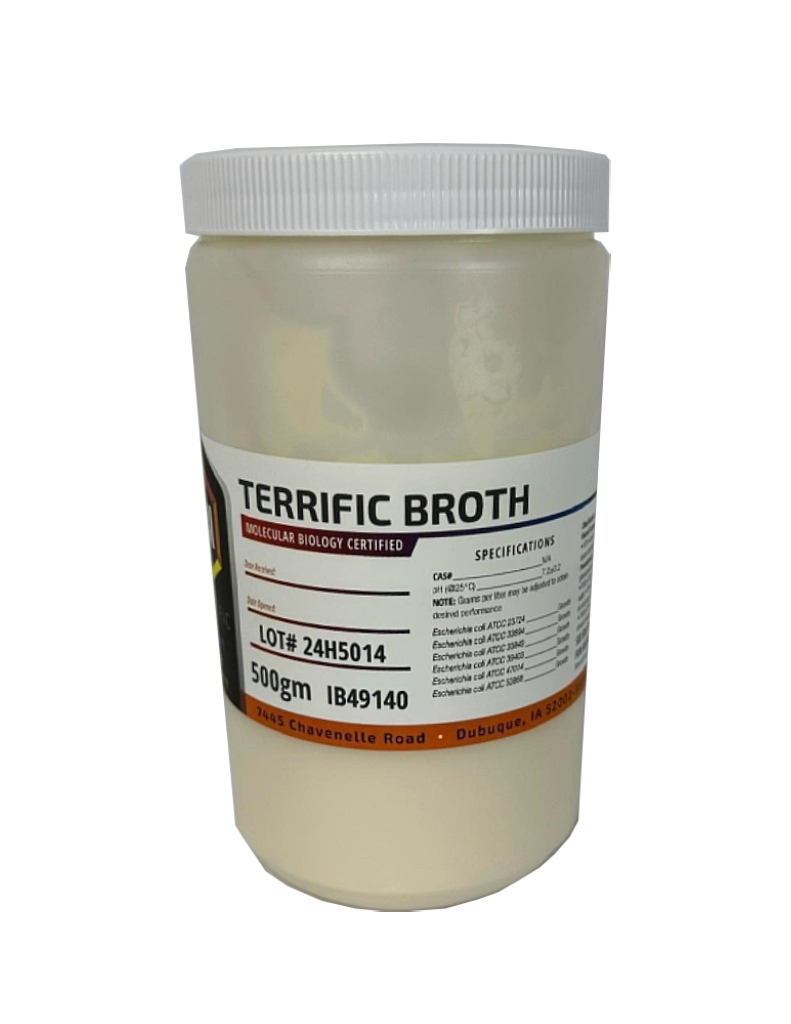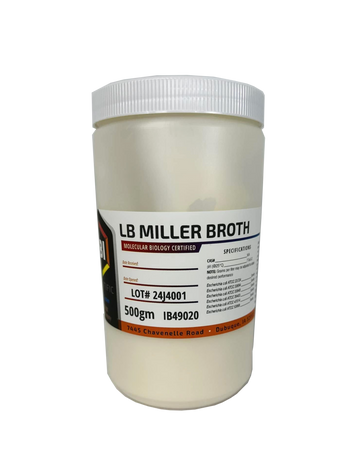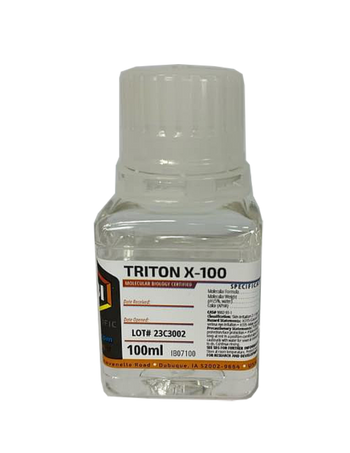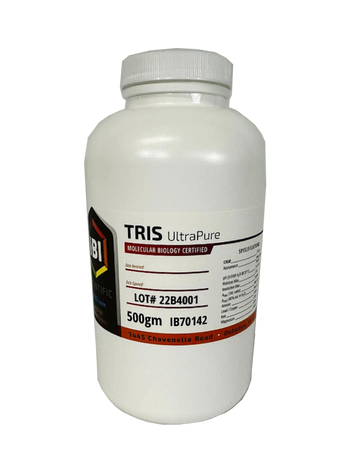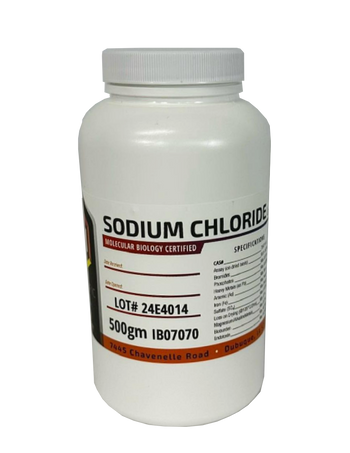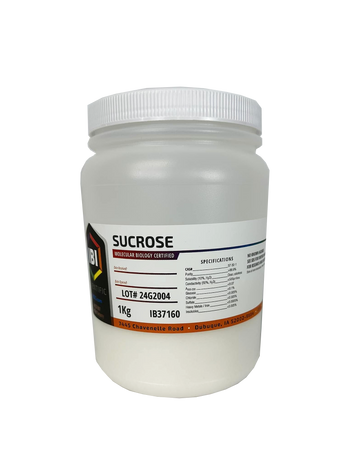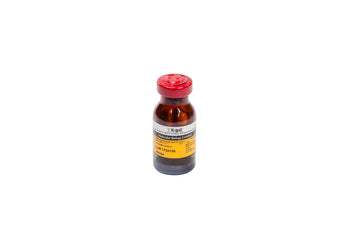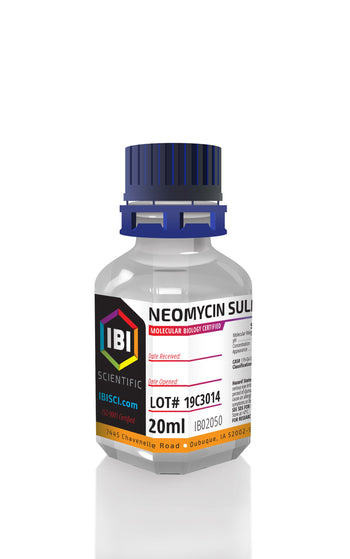
Terrific Broth – High-Yield Enriched Medium for E. coli Cultivation
IBI’s Terrific Broth is a nutrient-rich, high-performance medium designed to optimize the growth and plasmid yield of Escherichia coli (E. coli) cultures. Its specialized formulation ensures an extended growth phase, enabling the cultivation of high-density bacterial cultures with significantly improved plasmid production. Whether you’re conducting molecular biology research, protein expression studies, or industrial plasmid production, Terrific Broth is the ideal choice for achieving superior results.
Key Features of Terrific Broth
-
Rich in Essential Nutrients Terrific Broth contains high concentrations of tryptone and yeast extract, two critical components that provide a robust source of amino acids, peptides, vitamins, and other growth factors. These nutrients are essential for supporting robust bacterial growth and optimizing plasmid yields.
-
Glycerol as a Carbon Source Unlike glucose-based media, Terrific Broth utilizes glycerol as its primary carbon source. This minimizes the accumulation of acetic acid, a byproduct that can inhibit bacterial growth and reduce plasmid yields. By maintaining a more favorable metabolic environment, the medium promotes healthy and sustained bacterial proliferation.
-
Optimized Buffering System The addition of potassium phosphates in Terrific Broth helps maintain a stable pH throughout the bacterial growth cycle. This buffering system prevents harmful pH fluctuations that can compromise the efficiency of recombinant E. coli cultivation, ensuring consistent and reliable results.
Applications of Terrific Broth
Terrific Broth’s advanced formulation makes it suitable for a wide range of laboratory and industrial applications:
-
Recombinant E. coli Cultivation Designed specifically for cultivating recombinant strains of E. coli, Terrific Broth supports extended growth phases and higher cell densities, providing a reliable foundation for molecular biology and genetic engineering experiments.
-
High-Yield Plasmid Production Terrific Broth excels in applications requiring high plasmid yields, making it an invaluable tool for DNA extraction, cloning, and other plasmid-based research. Its nutrient-rich profile ensures a high plasmid copy number per volume.
-
Protein Expression Studies For researchers focused on recombinant protein expression, Terrific Broth’s ability to support high-density cultures translates into greater protein yield. This makes it an excellent choice for downstream applications such as protein purification and functional analysis.
-
Industrial and Academic Research Whether you’re working in an academic laboratory or a biotechnology production facility, Terrific Broth provides consistent, reproducible results across a variety of workflows.
Preparation Instructions for Terrific Broth
To prepare 1 liter of Terrific Broth:
-
Dissolve 47.6 grams of Terrific Broth powder in 900 mL of distilled water.
-
Add 4 mL of glycerol to the solution.
-
Adjust the total volume to 1 liter with distilled water.
-
Sterilize the prepared medium by autoclaving at 121°C for 15 minutes.
-
Allow the medium to cool to room temperature before inoculating bacterial cultures.
By following these preparation instructions, you can ensure optimal performance and reproducibility in your experiments.
Storage and Stability
- Storage Conditions: Store the dehydrated Terrific Broth powder in a tightly sealed container at room temperature. Protect the product from moisture and light to maintain its integrity.
- Shelf Life: Proper storage conditions ensure that the product remains stable and effective over an extended period, providing reliable results for all your bacterial culture needs.
Safety Information
Terrific Broth is classified as an irritant and should be handled with care. Follow these safety guidelines to minimize risk:
-
Wear appropriate personal protective equipment (PPE), including gloves, safety goggles, and a lab coat.
-
Avoid inhalation, ingestion, or direct contact with the skin and eyes.
-
In case of accidental contact, rinse the affected area thoroughly with water and seek medical advice if necessary.
-
Consult the Safety Data Sheet (SDS) for comprehensive safety and handling instructions.
Why Choose IBI’s Terrific Broth?
IBI Scientific is committed to providing high-quality laboratory reagents and culture media that meet the rigorous demands of scientific research. Our Terrific Broth is manufactured with precision to ensure consistency, reliability, and optimal performance in every batch. By choosing IBI’s Terrific Broth, you can:
- Achieve higher plasmid yields with recombinant E. coli cultures.
- Support high-density bacterial growth for protein expression and molecular biology studies.
- Rely on a product that meets industry standards for purity and performance.
Frequently Asked Questions (FAQs)
1. What makes Terrific Broth different from other media? Terrific Broth is enriched with higher concentrations of nutrients and uses glycerol instead of glucose, reducing acetic acid buildup. This results in improved plasmid yields and healthier bacterial cultures.
2. Can I use Terrific Broth for non-recombinant E. coli strains? Yes, while it is optimized for recombinant strains, Terrific Broth can support the growth of non-recombinant E. coli and other bacterial species that thrive in nutrient-rich environments.
3. How should I store prepared Terrific Broth? Store sterilized Terrific Broth in sterile containers at 4°C for short-term use. Avoid contamination by using aseptic techniques.
4. Is Terrific Broth suitable for industrial-scale applications? Absolutely! Terrific Broth’s reproducibility and performance make it ideal for both research and large-scale production workflows.
By choosing Terrific Broth from IBI Scientific, you’re investing in a proven medium that delivers exceptional results for all your E. coli cultivation needs. Order now to experience the difference in plasmid production, protein expression, and bacterial growth efficiency!
- Physical Specifications
- Certificate of Analysis
- SDS
- Technical Information
- Citations
Physical Attributes:
CAS#: N/A
pH (@ 25°C): 7.2 ± 0.2
NOTE: Grams per liter may be adjusted to obtain desired performance.
Molecular Biology Specifications:
Escherichia coli ATC 23724: Growth
Escherichia coli ATC 33694: Growth
Escherichia coli ATC 33849: Growth
Escherichia coli ATC 39403: Growth
Escherichia coli ATC 47014: Growth
Escherichia coli ATC 53868: Growth
Certificate of Analysis Links:
Terrific Broth CofA- Lot#19B3024Terrific Broth CofA- Lot#19G5021
Terrific Broth CofA -_Lot#20A3015
Terrific Broth CofA -_Lot#20C2003
Terrific Broth CofA_-_Lot#20G4001
Terrific Broth CofA_-_Lot#20J3002
Terrific Broth CofA_-_Lot#21C2012
Terrific Broth CofA - Lot#21E2005
Terrific Broth CofA - Lot#21H1003
Terrific Broth CofA - Lot#21H4011
Terrific Broth CofA - Lot#21H4001
Terrific Broth CofA - Lot#22B1002
Terrific Broth CofA - Lot#22C1012
Terrific Broth CofA - Lot#22C1002
Terrific Broth CofA - Lot#21L5041
Terrific Broth CofA - Lot#22F3002
Terrific Broth CofA - Lot#22L1012
Terrific Broth CofA - Lot#23C1003
Terrific Broth CofA - Lot#23D1014
Terrific Broth CofA - Lot#23D3005
Terrific Broth CofA - Lot#23H3013
Terrific Broth CofA - Lot#24C5004
SDS Links:
Formula per Liter:
● Casein Digest Peptone 12.0 gm
● Yeast Extract 24.0 gm
● Potassium Phosphate, Monobasic 2.3 gm
● Potassium Phosphate, Dibasic 12.5 gm
Preparation:
● Mix 50.8 gm of the medium in 1 L of purified water until evenly dispersed.
● Add 4 ml of Glycerol to the mixture.
● Heat with repeated stirring, and boil for one minute to dissolve completely.
● Distribute and autoclave at 121.0°C for 15 minutes.
Recommended Use:
IBI’s Terrific Broth is used with Glycerol in cultivating recombinant strains of E.coli. Terrific broth is a highly enriched medium for improving yield in plasmid bearing E.coli. Recombinant strains have an extended growth phase in the medium. The addition of tryptone and yeast extract in the medium will allow higher plasmid yield per volume. Glycerol is used as a carbohydrate source in this formulation. Unlike glucose, glycerol is not fermented to acetic acid.
Storage:
Store at room temperature. Keep tightly sealed. Protect from moisture and light.
Warning:
Irritant. Irritating to the eyes, respiratory system, and skin. Wear suitable protective clothing, gloves, and eye/face protection. See Material Safety Data Sheet for additional information.
An Optogenetic Platform to Dynamically Control the Stiffness of Collagen Hydrogels
The extracellular matrix (ECM) comprises a meshwork of biomacromolecules whose composition, architecture, and macroscopic properties, such as mechanics, instruct cell fate decisions during development and disease progression. Current methods implemented in mechanotransduction studies either fail to capture real-time mechanical dynamics or utilize synthetic polymers that lack the fibrillar nature of their natural counterparts. Here we present an optogenetic-inspired tool to construct light-responsive ECM mimetic hydrogels comprised exclusively of natural ECM proteins. Optogenetic tools offer seconds temporal resolution and submicron spatial resolution, permitting researchers to probe cell signaling dynamics with unprecedented precision. Here we demonstrated our approach of using SNAP-tag and its thiol-targeted substrate, benzylguanine-maleimide, to covalently attach blue-light-responsive proteins to collagen hydrogels. The resulting material (OptoGel), in addition to encompassing the native biological activity of collagen, stiffens upon exposure to blue light and softens in the dark. Optogels have immediate use in dissecting the cellular response to acute mechanical inputs and may also have applications in next-generation biointerfacing prosthetics.
A Novel Miniature CRISPR-Cas13 System for SARS-CoV-2 Diagnostics
Rapid, point-of-care (POC) diagnostics are essential to mitigate the impacts of current (and future) epidemics; however, current methods for detecting severe acute respiratory syndrome coronavirus 2 (SARS-CoV-2) require complicated laboratory tests that are generally conducted off-site and require substantial time. CRISPR-Cas systems have been harnessed to develop sensitive and specific platforms for nucleic acid detection. These detection platforms take advantage of CRISPR enzymes' RNA-guided specificity for RNA and DNA targets and collateral trans activities on single-stranded RNA and DNA reporters. Microbial genomes possess an extensive range of CRISPR enzymes with different specificities and levels of collateral activity; identifying new enzymes may improve CRISPR-based diagnostics. Here, we identified a new Cas13 variant, which we named as miniature Cas13 (mCas13), and characterized its catalytic activity. We then employed this system to design, build, and test a SARS-CoV-2 detection module coupling reverse transcription loop-mediated isothermal amplification (RT-LAMP) with the mCas13 system to detect SARS-CoV-2 in synthetic and clinical samples. Our system exhibits sensitivity and specificity comparable to other CRISPR systems. This work expands the repertoire and application of Cas13 enzymes in diagnostics and for potential in vivo applications, including RNA knockdown and editing. Importantly, our system can be potentially adapted and used in large-scale testing for diverse pathogens, including RNA and DNA viruses, and bacteria.
Article Link: Read Article
Application of Bio-Active Elastin-like Polypeptide on Regulation of Human Mesenchymal Stem Cell Behavior
Regenerative medicine using stem cells offers promising strategies for treating a variety of degenerative diseases. Regulation of stem cell behavior and rejuvenate senescence are required for stem cells to be clinically effective. The extracellular matrix (ECM) components have a significant impact on the stem cell's function and fate mimicking the local environment to maintain cells or generate a distinct phenotype. Here, human elastin-like polypeptide-based ECM-mimic biopolymer was designed by incorporating various cell-adhesion ligands, such as RGD and YIGSR. The significant effects of bioactive fusion ELPs named R-ELP, Y-ELP, and RY-ELP were analyzed for human bone-marrow-derived stem cell adhesion, proliferation, maintenance of stemness properties, and differentiation. Multivalent presentation of variable cell-adhesive ligands on RY-ELP polymers indeed promote efficient cell attachment and proliferation of human fibroblast cells dose-dependently. Similarly, surface modified with RY-ELP promoted strong mesenchymal stem cell (MSCs) attachment with greater focal adhesion (FA) complex formation at 6 h post-incubation. The rate of cell proliferation, migration, population doubling time, and collagen I deposition were significantly enhanced in the presence of RY-ELP compared with other fusion ELPs. Together, the expression of multipotent markers and differentiation capacity of MSCs remained unaffected, clearly demonstrating that stemness properties of MSCs were well preserved when cultured on a RY-ELP-modified surface. Hence, bioactive RY-ELP offers an anchorage support system and effectively induces stimulatory response to support stem cell proliferation.
Article Link: Read Article
A Thermophilic Cas13 enzyme for sensitive and specific one-pot detection of SARS-CoV-2
Robust, sensitive, and specific diagnostic platforms for early pathogen detection are essential for the identification of infected patients and management of current and future pandemics. CRISPR-Cas systems have been repurposed for SARS-CoV-2 detection in two-pot assays. Two-pot assays require extra steps and are prone to cross-contamination; however, the temperature range of current Cas enzymes limits the development of one-pot assays Here, we characterized TccCas13a, a thermophilic Cas13a enzyme with cis and trans activities from 37–70°C, and HheCas13a, which had a limited range and lower activity. We harnessed TccCas13a in a one-pot SARS-CoV-2 assay with two layers of amplification and TccCas13a-mediated collateral degradation of a single-stranded RNA reporter. This assay showed 95% sensitivity and 100% specificity compared with RT-qPCR on clinical samples. We also developed a mobile phone application to facilitate data reading, collection, and sharing. Our OPTIMA-dx detection module exhibits key features for point-of-care SARS-CoV-2 screening and pathogen detection in general.

